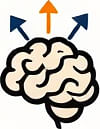Strategies for Building a High-Agency Mindset with Proactive Problem Solving
 by Max Miller
by Max Miller
Discover practical ways to foster a high-agency mindset through proactive problem solving. This article outlines actionable strategies and drills to help ambitious professionals tackle challenges head-on, leading to greater personal growth and success. Learn how to anticipate issues and drive positive change.

Proactive problem solving stands as a key element in personal development, allowing individuals to address issues before they escalate. This approach empowers people to take control of their circumstances and build resilience.
In the context of a high-agency mindset, proactive problem solving means actively seeking solutions rather than waiting for problems to arise. It involves anticipating potential obstacles and preparing responses in advance. For instance, professionals in fast-paced environments often use this method to stay ahead.
To begin developing these skills, start with simple daily practices. One effective way is to set aside time each day for reflection. During this period, review your goals and identify any hurdles that might appear. This habit helps in creating a routine that supports ongoing improvement.
Consider incorporating specific strategies into your routine. First, focus on scanning your environment for early signs of trouble. By doing so, you can intervene quickly and prevent minor issues from growing. High-agency mindset thrives on this kind of foresight, turning potential setbacks into opportunities.
Another strategy involves breaking down complex problems into manageable steps. Begin by defining the problem clearly, then brainstorm possible solutions. Use tools like mind maps or lists to organize your thoughts. This method ensures that you approach challenges systematically and with confidence.
Key Strategies for Proactive Problem Solving
Here are some core strategies to adopt:
- Anticipate challenges: Regularly assess your work or personal life for risks. For example, if you're working on a project, think about what could go wrong and plan accordingly.
- Take immediate action: Once you spot a problem, act without delay. This builds momentum and reinforces your ability to influence outcomes.
- Seek feedback: Engage with others to gain different perspectives. This can reveal blind spots and enhance your problem-solving toolkit.
These strategies work best when practiced consistently. Over time, they help in fostering a sense of control and reducing stress.
Now, let's explore practical drills to sharpen these skills. Drills are hands-on exercises that simulate real-world scenarios, making them ideal for building a high-agency mindset.
One drill is the "what-if" exercise. In this, you imagine various scenarios and outline steps to handle them. For example, if you're preparing for a job interview, consider questions that might challenge you and rehearse your answers. This practice not only boosts confidence but also prepares you for unexpected situations.
Another drill involves role-playing with a partner. Pair up with a colleague or friend and act out potential conflicts. Drills like this allow you to practice responses in a safe setting, improving your ability to stay calm under pressure.
To make these drills more effective, track your progress. Keep a journal where you note what worked and what didn't. This reflection turns experiences into valuable lessons, aiding in continuous growth.
Implementing Drills in Daily Life
Integrate these drills into your schedule for maximum impact. Start with short sessions, such as 10-15 minutes a day, and gradually increase as you become more comfortable. For instance, use morning routines to anticipate daily challenges, setting the tone for proactive behavior.
Remember, building a high-agency mindset requires persistence. It's about viewing problems as chances to learn and grow. By consistently applying these strategies and drills, you can transform how you handle obstacles.
In team settings, encourage group drills. For example, hold brainstorming sessions where everyone contributes ideas for solving shared problems. This not only enhances individual skills but also strengthens collective resilience.
As you progress, you'll notice improvements in decision-making and overall satisfaction. Proactive problem solving becomes second nature, leading to better outcomes in both personal and professional spheres.
To sustain this mindset, celebrate small wins. Recognizing your successes reinforces positive habits and motivates further action.
Finally, combine strategies with drills for a comprehensive approach. This blend ensures that you're not just planning but also actively testing your plans in real time.
Through dedicated effort, anyone can cultivate these essential skills. The results—greater control, improved performance, and enhanced well-being—make the investment worthwhile.
